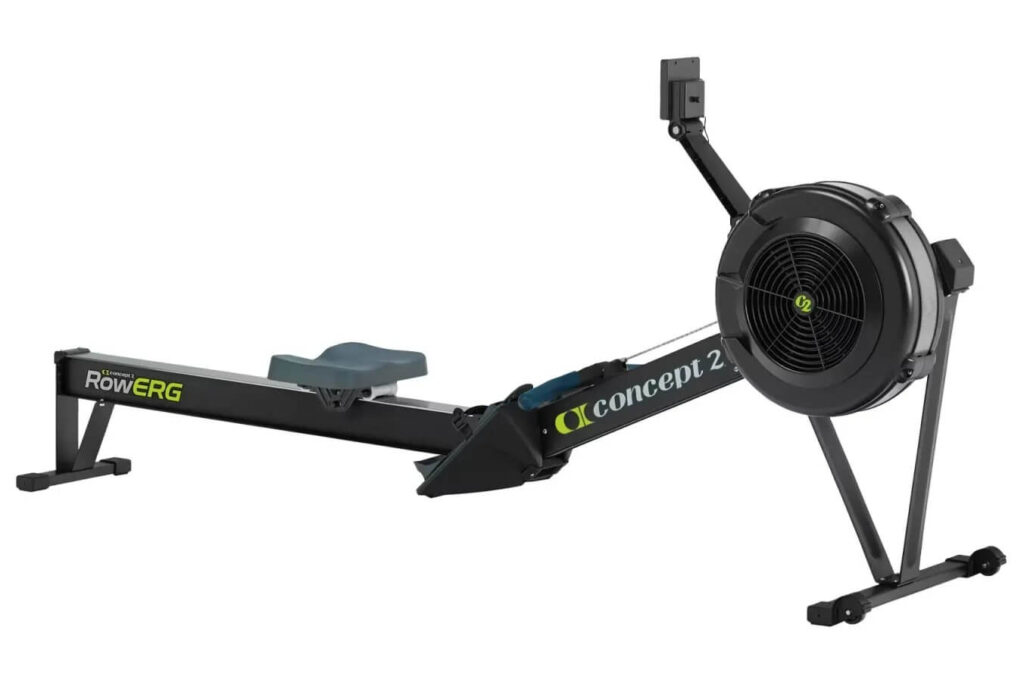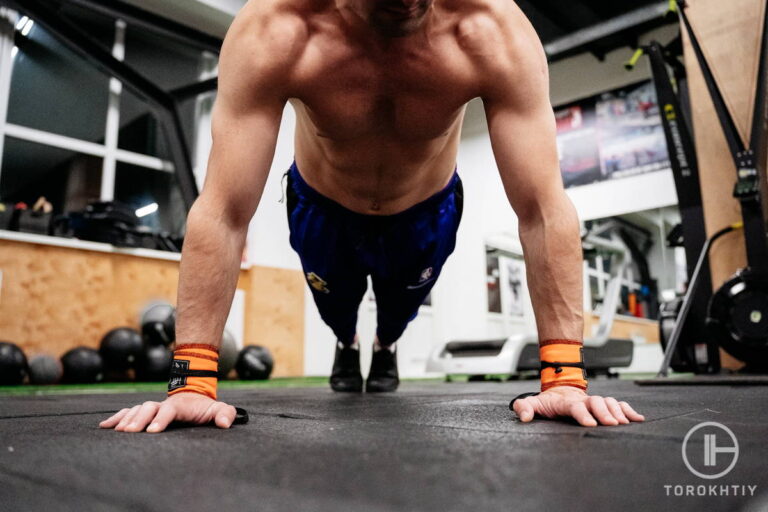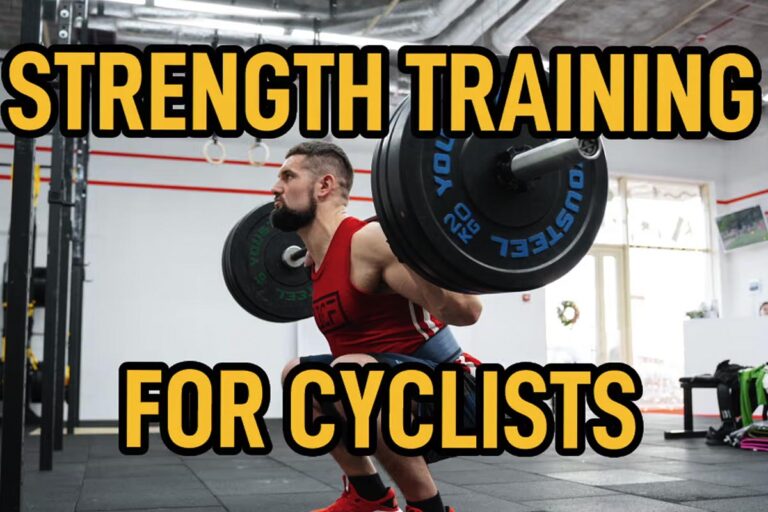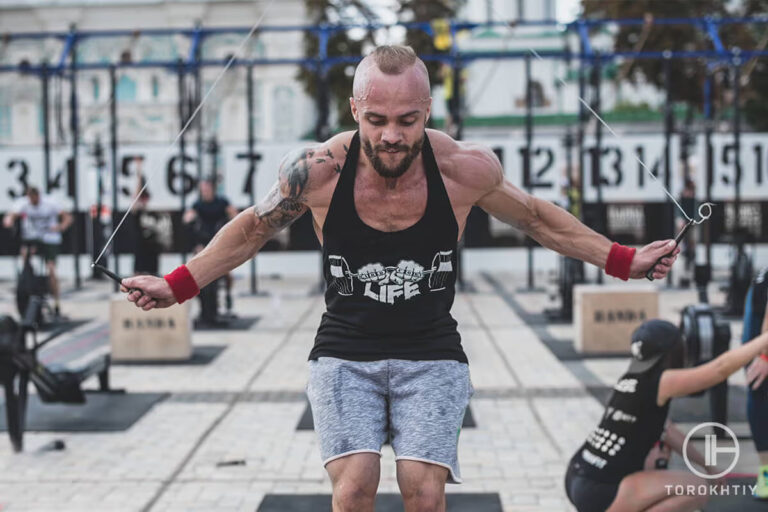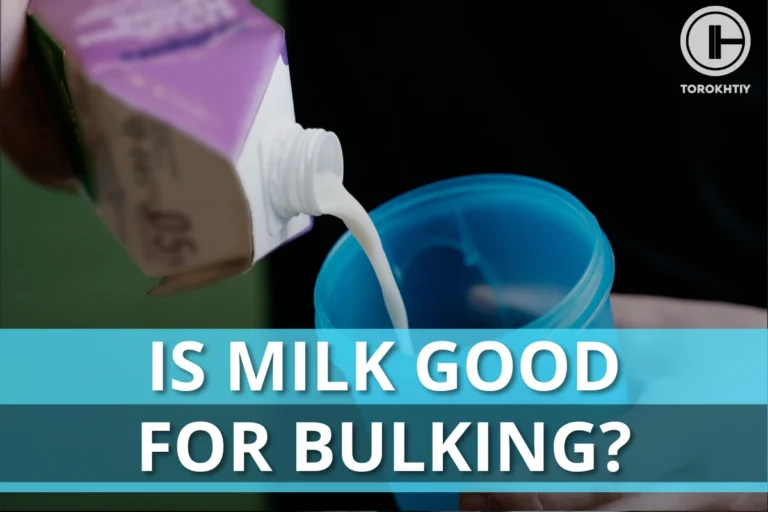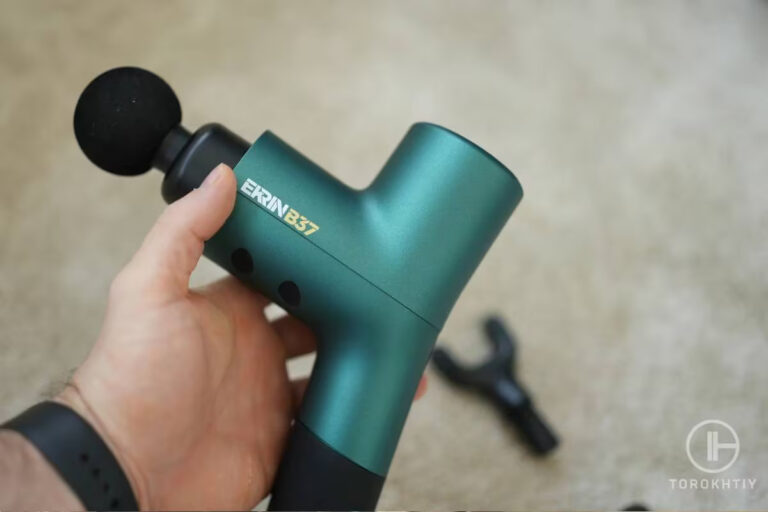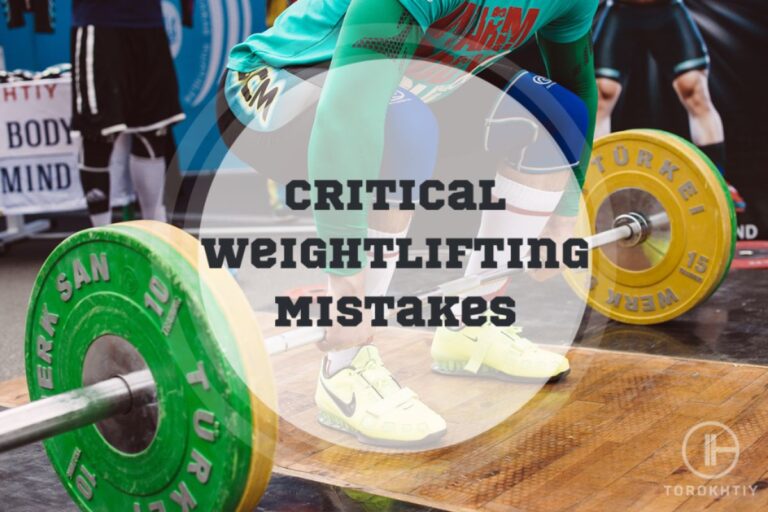Does Rowing Build Muscle?
Reviewed by: Oleksiy Torokhtiy (21 years of Oly Lifting experience)
Rowing is known for being a highly-engaging physical activity, but does rowing build muscle strength and mass?
In this article, we’ll explore many benefits of this popular workout to answer this and other common questions about rowing.
Let’s find out the biomechanics behind the exercise, what benefits it provides to the athlete, and see if it’s possible to use rowing for muscle growth.
Does Rowing Build Muscle? Rowing does engage multiple muscle groups, including the legs, back, arms, and core. It can make you stronger, leaner, and more explosive, but it’s not effective to use rowing for muscle growth specifically.
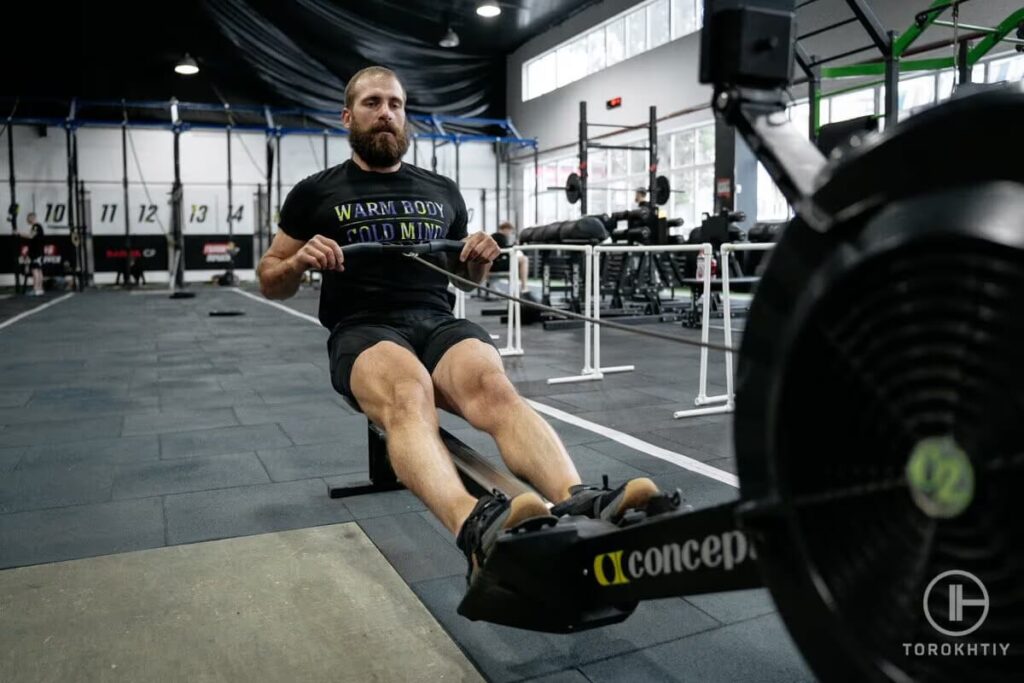
Intro to Rowing Training
Rowing is a well-rounded workout that engages nearly your entire body while also providing a great cardiovascular challenge. As the name suggests, the exercise aims to replicate the fluid motion of rowing a boat and all the benefits that come along with it.
However, given the limitations of outdoor rowing – relying on factors like seasonal availability and weather conditions, not to mention the need for a boat and suitable water bodies – we turn instead to indoor exercising using specialized rowing machines.
If you’re familiar with rowing, you’re probably aware that there are different types of strokes, grips, and postures used. These various approaches to rowing utilize different biomechanics. In simple terms, the way we row alters the type of workout we receive.
When we apply these principles to indoor rowing exercises, particularly when using a rowing machine, we can get different exercise results. For example, factors such as range of motion (ROM), grip position, and resistance settings influence the primary muscle groups engaged, exercise intensity, health benefits, etc.
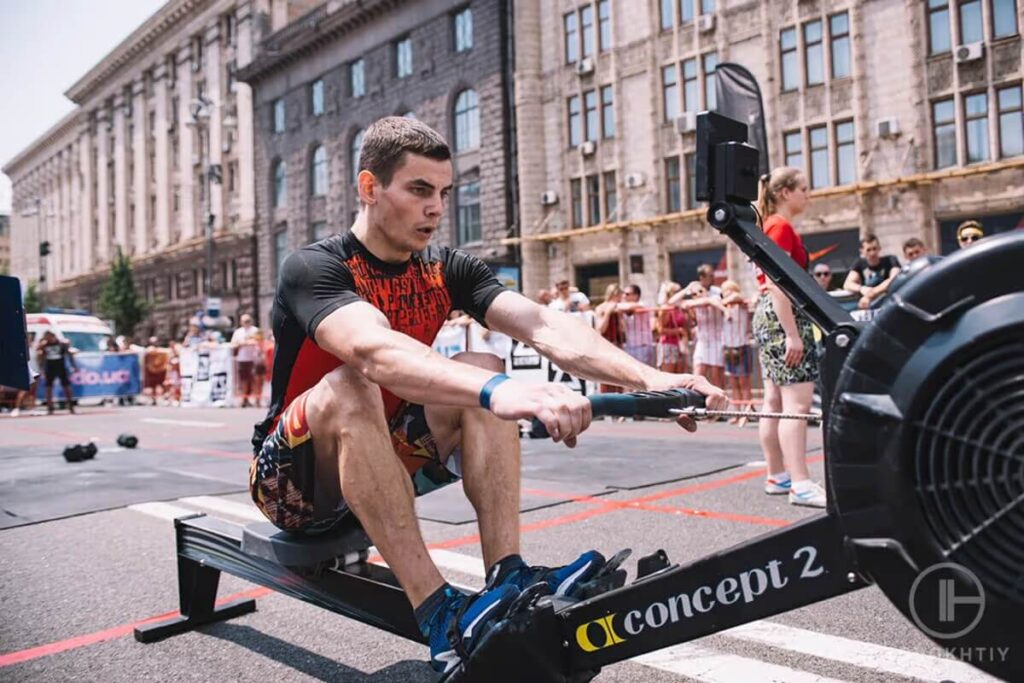
Does Rowing Build Muscle and Is It Effective?
Rowing is a high-intensity, resistance-based exercise that places significant demand on the body. The intensity and duration of your rowing session can be adjusted towards specific fitness goals, including cardiovascular endurance, raw strength, or explosive power. But can rowing build muscle?
It can but to a certain degree. In a nutshell, when rowing, the repetitive pulling motion engages a wide range of muscle groups, including the back, legs, core, arms, and shoulders.
Consistent rowing training, combined with progressive overload and proper technique, can contribute to building general strength and toning our physique, however, it’s not the most effective exercise if you’re looking for strict muscle growth (size).
Benefits Of Rowing Workout For Muscle Building
Rowing exercises carry with them various health and fitness benefits helpful for all age ranges and athletic levels. For example, did you know that seasoned rowers were observed to experience less cognitive decline as they age compared to non-athletic adults?
In addition to that, rowing is renowned for its exceptional muscle activation and engagement, here’s how.
✅ Full Body Engagement
Rowing is a compound exercise, meaning it activates multiple muscle groups throughout its range of motion. When you push against the footrest, your leg muscles, including the quadriceps, hamstrings, and calves, come into play.
As you pull on the handlebar, the focus shifts to your back muscles, particularly the trapezius (traps), along with the latissimus dorsi (lats). In addition, your shoulders and arms, including the rhomboids, biceps, and forearms, contribute to the pulling motion.
All the while, your core muscles remain engaged throughout the exercise, ensuring proper posture and overall body control. Together, these combined efforts create a comprehensive full-body workout.
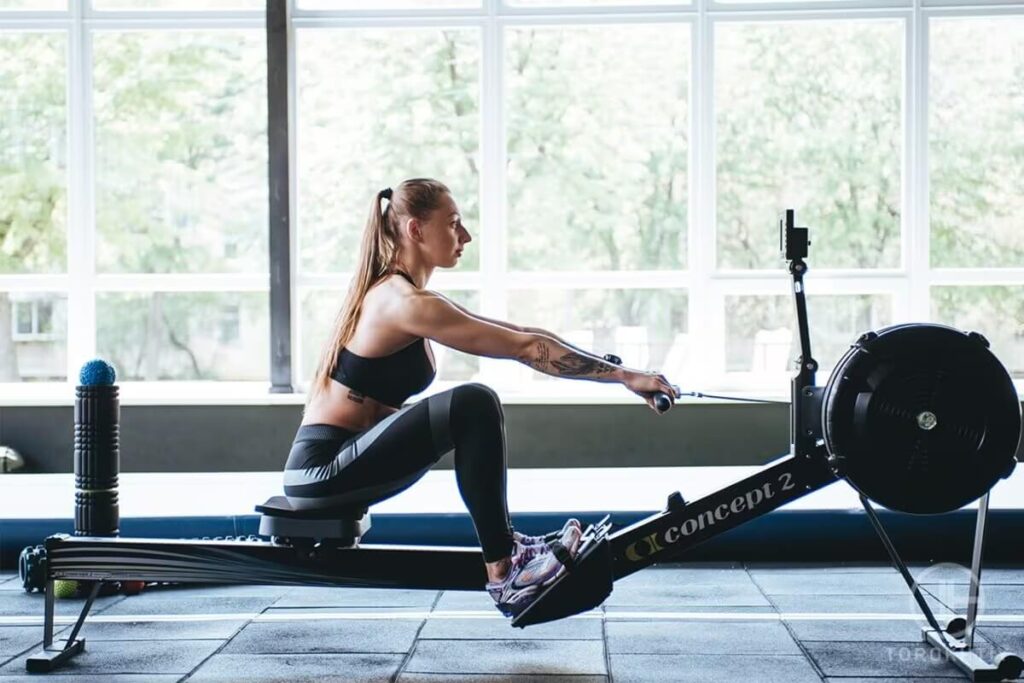
✅ Relative Low Impact
In contrast to weightlifting and other forms of resistance training, rowing offers a low-impact workout that minimizes stress on your joints. The upper-body pulling motion involved in rowing, as opposed to pushing, contributes to its joint-friendly nature.
By engaging in rowing exercises, you can get stronger and leaner without subjecting your joints to excessive strain. This benefit also makes rowing a safe choice for individuals with joint sensitivities or those recovering from injury.
✅ Cardiovascular Health
Rowing is not only an excellent exercise for building muscle but also offers significant cardiovascular benefits. Among other things, it increases your heart rate, burns calories, and improves your lung capacity.
Compared to cycling, one of the most popular forms of cardio exercise, studies have shown that rowing not only has equally good heart rate and blood pressure effects but also greatly increases blood pump and blood flow. Furthermore, using a rowing machine matches the calorie consumption of moderate cardio exercises like walking or cycling, suggesting it may be as effective for weight loss, too.
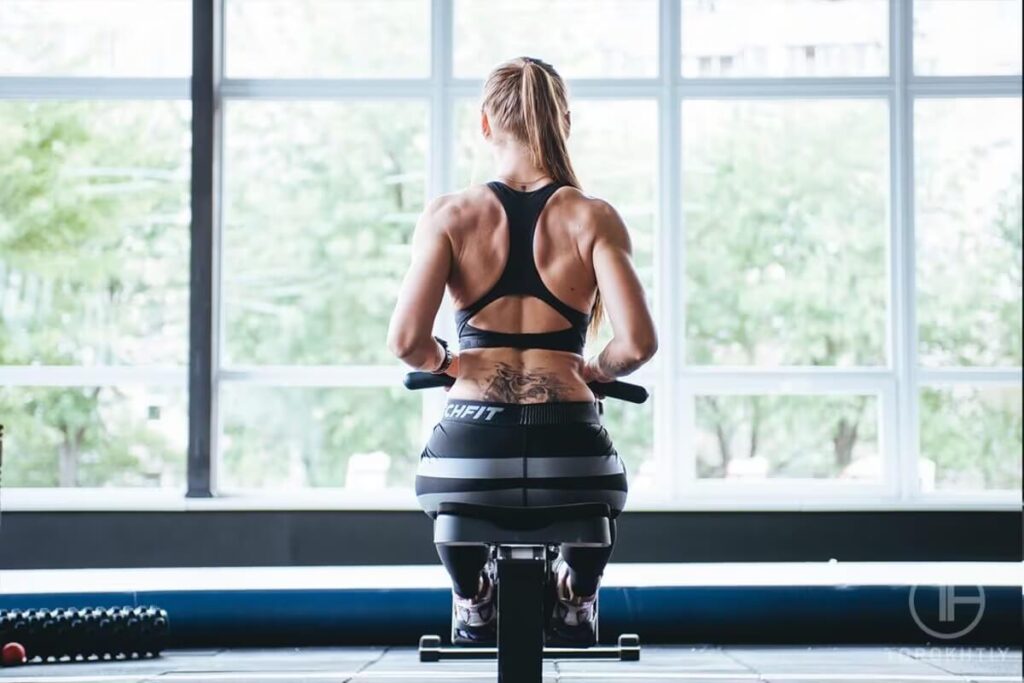
How to Upgrade Your Rowing Workout to Build Muscle Mass?
So, now that we’ve answered: is rowing good for building muscle and how, let’s talk about taking your rowing workout to the next level. While we established rowing isn’t the number one exercise for strict muscle growth, there are some approaches you can take to enhance this. Here’s how seasoned athletes keep doing it without getting fatigued:
1. Use Progressive Overload
Rowing machines typically offer adjustable resistance levels, most commonly using a magnetic-based flywheel, allowing you to progressively increase the challenge as you get stronger.
This way, you can continue to stimulate your muscles and promote more muscle growth without fear of “outgrowing” the machine. Utilizing Progressive Overload training in your workout can have significant improvements in the targeted muscle groups in terms of strength and mass, and this effect is even greater in novice athletes.
2. Switch Your Approach
Rowing can be approached in multiple ways depending on your exercise goals. Sticking to a single workout method doesn’t utilize the full potential of a rowing machine. There are various types of rowing workouts you can try to enhance your fitness levels, some of which can help with building muscle mass.
For example, endurance rows focus on maintaining a steady pace over an extended period, while interval training involves alternating between high-intensity bursts and recovery periods. You can also check your rowing machine for any pre-build workout plans to try.
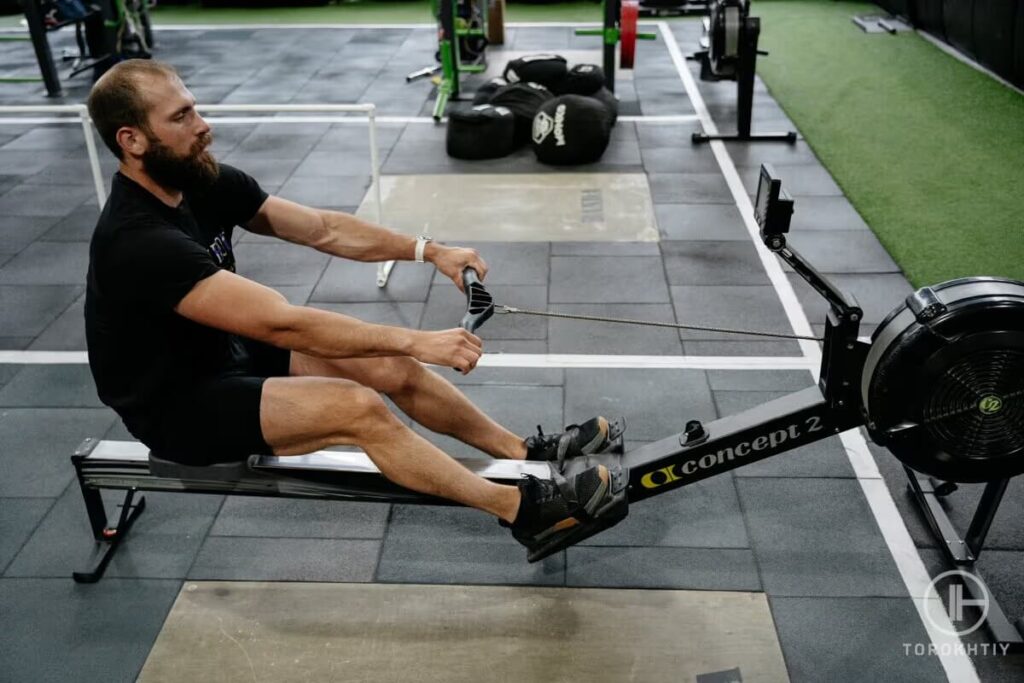
3. Be Mindful Of What You Eat
Exercise is only part of the muscle-building equation. To support muscle mass growth, it’s important to have a well-rounded diet, as well as consider taking certain supplements. Protein-rich food is excellent for muscle repair and growth, so remember to incorporate meats, fish, legumes, or tofu into your meals.
For long-lasting energy, add carbohydrates like whole grains and sweet potatoes, and don’t shy away from healthy fats, such as those found in avocados and various types of nuts. And of course, don’t forget to load up on a variety of fruits and vegetables to get all the essential nutrients and vitamins the natural way.
If you’re looking to boost your protein intake, you can also consider taking whey protein powder after exercising. It’s a convenient way to get that extra protein into your system.
How to Use the Rowing Machine Correctly for Muscle Growth?
We’ve already talked extensively about the relationship of rowing and building muscle. But do you need to get a boat or does a rowing machine build muscle just as well? That was a rhetorical question, of course, rowing machines can be used for effective indoor training.
But before you start working out on your rowing machine, it’s important to understand the proper exercise technique. Just like outdoor rowing, a rowing machine follows a patterned movement. Here’s a step-by-step guide on what that looks like:
1. Catch Position
The initial position before each rowing stroke is called the “catch” position. To get into this phase, begin by sitting down with your shins vertical and your knees bent close to their maximum range. Lean slightly forward from your hips, maintaining a comfortable posture.
Fully extend your arms forward, gripping the rowing handle. Note that depending on your body size and the machine’s dimensions, you might not be able to reach the handlebar while seated.
This is perfectly normal, and all you have to do is pull the handlebars towards you before sitting down to ensure you’re in the correct starting position.
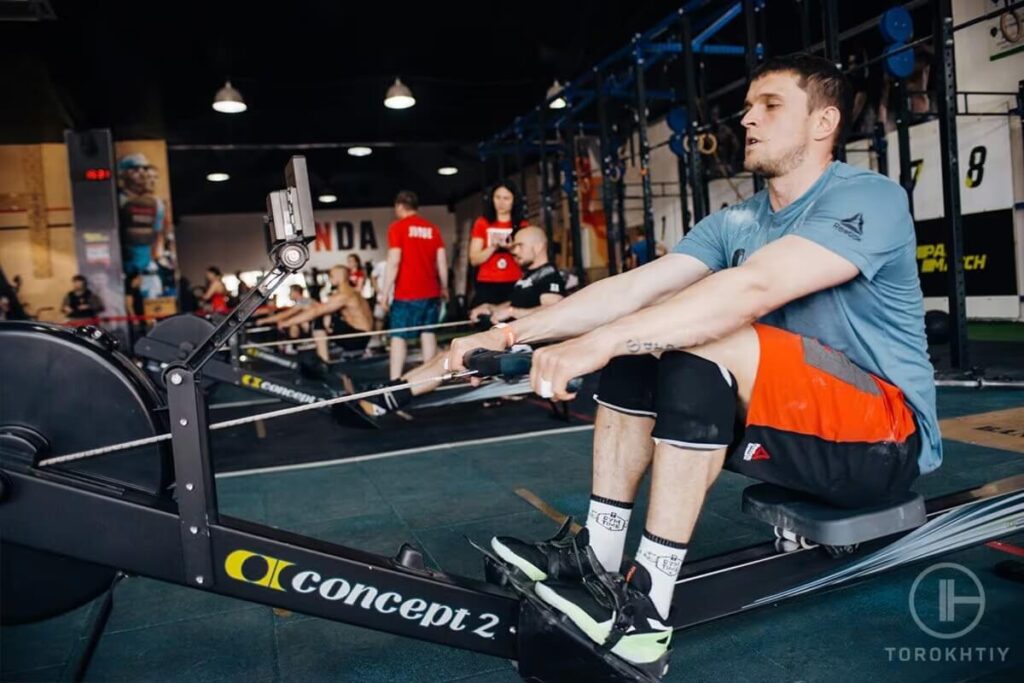
2. Drive Phase
During the drive phase, you unleash the power needed to execute the stroke. It starts with an explosive push from your legs against the footrest, extending your knees.
As you approach full leg extension, smoothly lean back slightly to create a slight angle beyond 90 degrees. It’s crucial to engage your core at this point to maintain stability and prevent overextension.
At the same time, pull the handle towards your lower chest or upper abdomen, depending on your workout goals. Bend your arms at the elbows and draw your shoulder blades back, feeling the activation in your back muscles.
This coordinated movement brings together the strength of your legs, core, and upper body, generating the force that propels you backward. When executed properly, this fluid motion combines multiple muscle groups, resulting in a powerful and effective rowing stroke.
3. Finish
As you extend your legs completely and bring the handlebar towards your body, you’ll naturally lean back slightly further. However, it’s important to keep your core muscles engaged to avoid overextending.
This is the peak of the exercise, where your legs are fully extended, your elbows are bent and pointing backward, and your back muscles are actively involved. You’ve almost completed the stroke, and now it’s time to prepare for the next one by resetting and returning to the starting position.
4. Recovery Phase
Following the “finish,” you smoothly transition into the recovery phase. Think of it as a reverse of the “drive” phase. Instead of starting with your legs and moving to your arms, this time you begin by extending your arms away from your body.
Once your elbows are by your side, you bend your knees, allowing the seat to slide back towards the catch position. In this phase, it’s crucial to control your movement and not release grip tension to prevent the seat from slinging you back toward the machine.
Additionally, this phase works as a short resting period to catch your breath and mentally reset for the next stroke.
Important to Know
Rowing is a rhythm-based exercise, where each stroke should ideally follow the same breathing pattern. It is recommended to coordinate your breath, exhaling during the drive phase and inhaling during the recovery phase.
When it comes to intensity and speed, there are no strict rules; everyone can set their own pace according to their abilities and goals.
If you find yourself struggling to maintain the rhythm or holding your breath during the exercise, it indicates that the intensity is too high. In such cases, it is important to immediately stop exercising and make adjustments to the machine.
Improper breathing patterns and prolonged breath-holding during exercise can lead to irregular heartbeats and hinder optimal oxygen flow to the brain. This can potentially result in fainting, seizures, and even permanent brain damage.
Recommended Rowing Machine: Concept2 RowErg Rower
The Concept 2 RowErg is an advanced rowing machine that incorporates a cutting-edge open flywheel design, utilizing airflow to provide up to 10 resistance settings while ensuring a smooth and quiet operation.
It’s made from highly durable materials, including the aluminum I-beam monorail and stainless steel track, that deliver consistent and fluid back-and-forth movement.
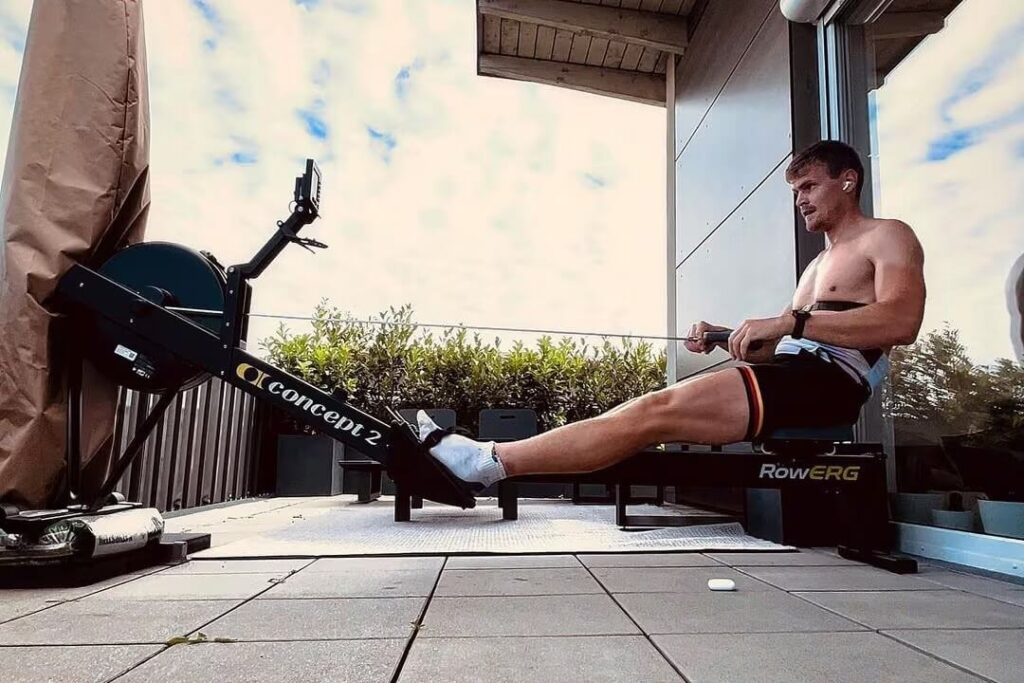
With a remarkable maximum user capacity of 500 lbs, adjustable footrests, and an ergonomic handle, it accommodates a wide range of users. The height-adjustable PM5 Performance Monitor offers real-time data on distance, speed, pace, calories burned, and watts.
For added convenience, the rower can be easily disassembled into two parts for storage and features caster wheels for effortless transportation. It comes with a five-year warranty for frame parts and a two-year warranty for all other components.
FAQ
Does Rowing Build Biceps?
Yes, to an extent. It’s not as effective as a regular biceps curl, for example, but using rowing machines does activate the biceps brachii muscle group, along with other arm muscles.
During the Drive phase of the rowing movement, as your elbow bends and moves alongside your body, the biceps muscles contract. Additionally, during the Recovery Phase, your biceps, along with your triceps, eccentrically engage to help maintain control of the handle.
Does Rowing Hit Abs?
Yes, rowing engages the abdominal muscles (abs) and the erector spine (lower back), providing a lesser-focused but noticeable core exercise on top of everything else.
How Long Should You Use a Rowing Machine to Build Muscle?
According to research on resistance training, muscle hypertrophy (growth) sees similar stimulation both with low-repetition, high-load sets and high-repetition, low-load sets, while the former is best for building raw strength. In other words, if your goal is strictly muscle growth, you’re free to take either exercise approach according to your preference.
For example, if you don’t want to overwork your muscles but get a decent workout out of them, 8-12 reps of roughly 60-80% of your maximum capacity is a good starting point.
Conclusion
In summary, does rowing build muscle? Here are the main takeaways from the article:
Trying to use rowing for muscle growth specifically will not be as effective as traditional resistance-based exercises. That said, rowing is a highly-efficient, well-rounded exercise thanks to its dynamic movement, full-body engagement, and compound nature.
This makes it a good choice for building general strength and explosive power and getting leaner, more defined muscles. Additionally, it offers remarkable cardiovascular benefits that rival other popular cardio exercises, such as weight loss, improved heart rate, and increased blood flow.
If you’re in the market for a rowing machine, we highly suggest the Concept2 RowErge for its combination of quality and utility at a fair price.
We’d also like to hear from you. Let us know if you have tried rowing before or if you are just getting into it. Also, we’d love to know which information in this article you found most interesting and useful. This helps us stay in touch and make improvements to future content.
Use the comment section to let us know and remember to follow our social media pages for more valuable fitness content.
Also read:
- Rowing Machine Benefits
- What Muscles Does a Rowing Machine Work
- What Is a Good Rowing Pace
- How Long Should a Rowing Workout Be
- Is Rowing Good for Weight Loss
- How Many Calories Does Rowing Burn
- Rowing Machine vs Stationary Bike
- Best Rowing Machine for Beginners
- Best Rowing Shoes
References:
- Range of Motion // Physio-pedia: https://www.physio-pedia.com/ Range_of_Motion
- The physiology of rowing with perspective on training and health // NCBI: https://pubmed.ncbi.nlm.nih.gov/ 32627051/
- How to Add Compound Exercises to Your Workout Routine // Healthline: https://www.healthline.com /health/fitness-exercise/compound-exercises
- Rowing increases stroke volume and cardiac output to a greater extent than cycling // NBCI: https://pubmed.ncbi.nlm.nih.gov/ 25317691/
- General Physical Activities Defined by Level of Intensity // CDC: https://www.cdc.gov/ nccdphp/dnpa/ physical/pdf/pa _intensity_table_ 2_1.pdf
- Improving muscle size with Weider’s principle of progressive overload in non-performance athletes // Researchgate: https://shorturl.at/fJPW8
- Is It Safe to Hold Your Breath? // Webmd: https://www.webmd.com/a-to-z-guides/is-it-safe-to-hold-your-breath
- Eccentric training with a powered rowing machine // Sciencedirect: https://www.sciencedirect.com /science/article/pii/ S2590093519300086
- Strength and Hypertrophy Adaptations Between Low- vs. High-Load Resistance Training: A Systematic Review and Meta-analysis // NCBI: https://pubmed.ncbi.nlm.nih.gov/ 28834797/
Why Trust Us?
With over 20 years in Olympic Weightlifting, our team does its best to provide the audience with ultimate support and meet the needs and requirements of advanced athletes and professional lifters, as well as people who strive to open new opportunities and develop their physical capabilities with us.
By trusting the recommendations of our certified experts in coaching, nutrition, dietology, and sports training programming, as well as scientific consultants, and physiotherapists, we provide you with thorough, well-considered, and scientifically proven content. All the information given in the articles concerning workout programming, separate exercises, and athletic performance, in general, is based on verified data. We ensure that you can rely on our professionals’ pieces of advice and recommendations that can be treated as personalized ones which will benefit you and fully meet your needs.
The product testing process is described in more detail here
Author: Ihor Shymechko
Pro Olympic Weightlifter, Coach
Best Results: Snatch – 208 kg,
C&J – 240 kg
Ihor has been a professional weightlifter since 1996, boasting over two decades of competition experience. His notable achievements include clinching the European Championship in 2009 and securing a silver medal in the 105kg division at the Senior World Championships in 2011. Ihor represented his country in the 2008, 2012, and 2016 Summer Olympics. After retiring from competitive weightlifting, he transitioned to coaching, leveraging his vast experience to guide athletes who now compete on both national and international stages.
Reviewed by: Oleksiy Torokhtiy
Olympic Weightlifting Champion
Best Results: Snatch – 200 kg,
C&J – 240 kg
Oleksiy Torokhtiy is a professional athlete boasting 20 years of experience in Olympic weightlifting. With multiple European and World titles under his belt, he has showcased his prowess in two Olympic Games (Beijing 2008 and London 2012). Upon concluding his illustrious career, Oleksiy dedicated himself to coaching. By 2022, he had conducted over 200 weightlifting seminars worldwide. He is the visionary behind an international sportswear and accessories brand known for its motto, “Warm Body Cold Mind.” Additionally, he is an esteemed author and the creator of a series of training programs and eBooks.

